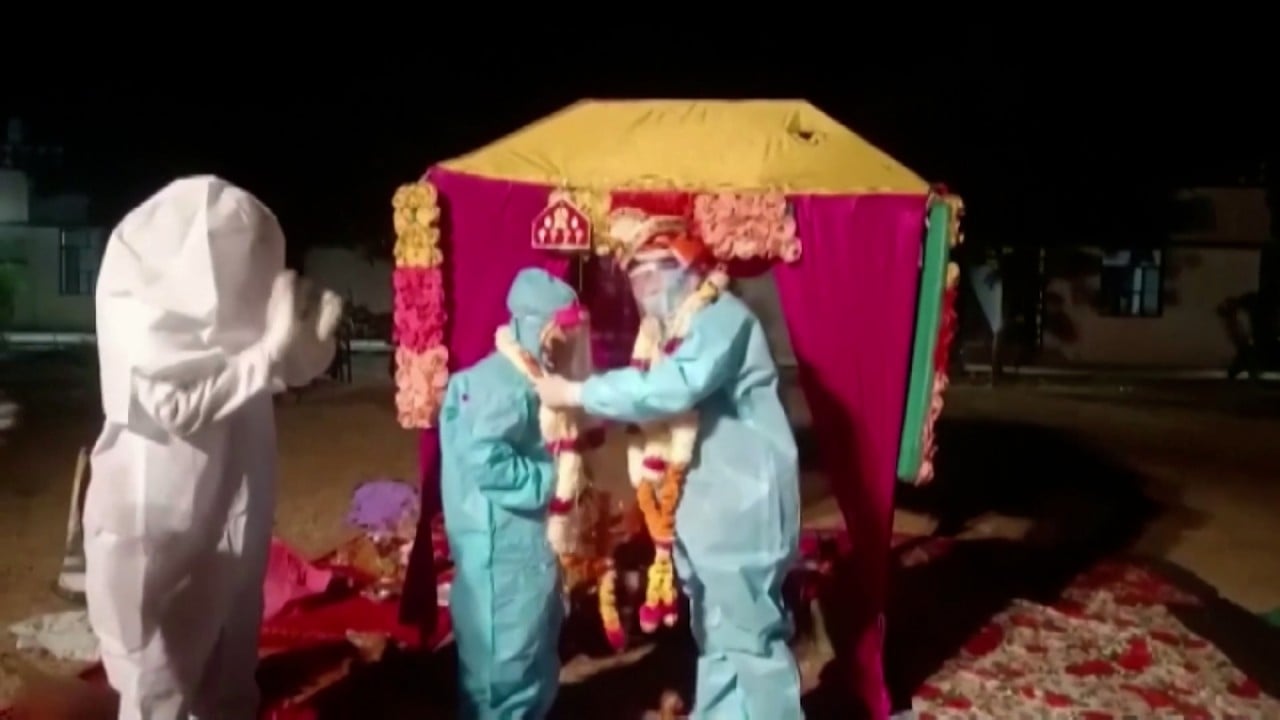
Woman learns son’s bride is her long-lost daughter on their wedding day – but since he was adopted, couple can still tie the knot
- A mother in eastern China discovered that the woman her adopted son was meant to marry was her long-lost daughter
- The future mother-in-law realised the bride had a birthmark that was identical to one her baby had
The eagle-eyed future mother-in-law asked the bride’s parents an uncomfortable question: “did you adopt your daughter?” The adoption had been a family secret, so the fact that the woman knew this confidential information was a major clue.

When the family said “yes”, the mother-in-law broke down in tears and claimed the bride was her daughter that she had been trying to find for 20 years. Then the bride also broke down, saying she had also been searching for her biological mother.
The bride said finding her mother was a happier occasion than the wedding itself, according to the reports.
But the twists do not stop there. Hong Kong newspaper Oriental Daily reported that, after failing to find her daughter, the mother-in-law had decided to adopt a boy, meaning that, because the bride and groom were not biologically related, the couple was allowed to follow through with the wedding.
Online, people poked fun at the story. On Baidu, China’s dominant search engine, one person requested a television drama be made about the incident. Another person asked if the groom was simultaneously a son and a son-in-law.
There was also a debate about whether it is legal for the pair to get married. One person asked, “Can this marriage go through? Although there is no blood relationship, they now have a ‘brother and sister’ status.”
The first national marriage law under the Chinese Communist Party was passed in 1950. It was designed to end feudal practices such as arranged marriages and child betrothals while also trying to make women an equal part of the family. For example, this law made it significantly easier for women to seek divorce.
The 1950 law is also the source of Chairman Mao Zedong’s famous quote, “Women hold up half the sky.”
Mother says disabled singer in video is her long-lost daughter
In 1980, the government passed a significant reform to the law, including language that bans marriages between lineal relatives (brothers, sisters etc) and collateral relatives (cousins, uncles, nieces etc.). The relevant articles specifically use the term “relatives by blood” so, because the bride and groom in the Suzhou wedding were not related by blood, this law would not apply.
In premodern China, which usually refers to the country’s history before about 1800, there existed a practice called Tongyangxi or a “minor marriage.” In this tradition, a family would adopt a preadolescent child, usually a girl, and raise her to be married to their son of the same age.
The practice was outlawed by the Communist Party when it took power in 1949.


